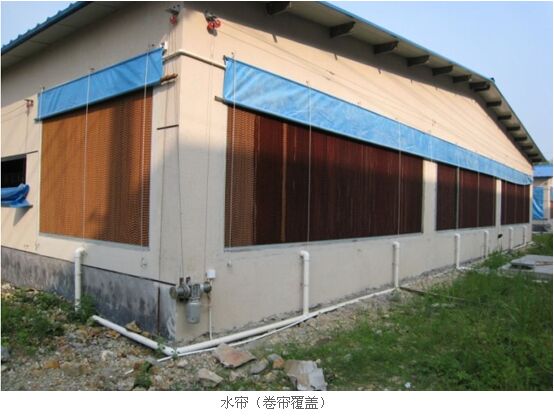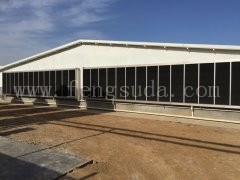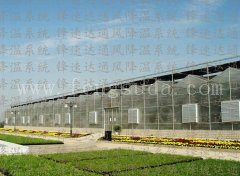玻璃钢负压风机:博鳌论坛观察:该中国世界观出场了?_大公资讯_
3月28日,中国国家主席习近平出席博鳌亚洲论坛2016年年会并发表主旨演讲。开幕式前,习近平与出席论坛年会的外国领导人合影。
大公网评论员 宋代伦
为时四天的2016博鳌亚洲论坛已经闭幕。虽然仅仅四天,但已成为创会以来会期最长的一次。承接三月中旬闭幕的全国两会,关于中国,关于亚洲,关于世界各种大问题的讨论,带着热气都延续到了海南这座美丽小镇。
博鳌论坛诞生于2001年春,这一年是21世纪的元年。可以说,博鳌亚洲论坛诞生于新世纪的亚洲,也注定去构建亚洲的新世纪。同样在这一年秋,中国还举办了APEC,加入了世贸组织。也是这一年,9·11事件震惊世界。中国开始逐渐走进世界体系并参与其中,美国也开始了新一轮全球战略布局,21世纪就这样开始了。
时过境迁,虽然才短短十四年,但国际政经格局已经发生巨变。西方发生了金融危机,至今尚未走出这一周期。而与此同时,中国的GDP总量以美元计已从破一万亿,猛增到破十万亿;金砖国家从2001年经济学家的概念,变成实在的多边外交合作机制。按购买力平价计,不但中国GDP超过了美国,金砖国家也超过了七国集团。世界已不再是西方包打天下的世界。
短短十四年,博鳌亚洲论坛见证了这一格局改变的全过程。复旦大学的沈丁立教授认为,论坛见证了中国从融入国际体系,到担任新生的亚洲论坛的永久东道国,并在此后的十多年中与亚洲各国协力并担任引领,尤其是在议程设置上推动亚洲的经济合作,充分显示了中国自信与担当。
从历届论坛中国领导人的主旨演讲来看,我们能清楚看到这一点。“合作”“发展”“共赢”等是出现频率最高的词汇,这既是论坛创立的初衷,也是一以贯之延续到未来的主题。亚洲与世界因合作而发展,因发展更加紧密地合作,以实现共赢。
“互联互通”成为当下中国外交话语中的热词,它首次出现于胡锦涛在2008年的主旨演讲中,其中提到了“深化财政金融合作,促进亚洲基础设施建设互联互通”。到2013年,习近平在演讲中又称“中国将加快同周边国家的互联互通建设,积极探讨搭建地区性融资平台,促进区域内经济融合”。经过数年话语与实践的积累,这一构想在今年的论坛期间发展成了举世瞩目的焦点。
3月12日英国的“反水”拉开了亚投行版图扩张的大幕。此后,除美日外,西方主要国家纷纷申请加入。论坛期间,俄罗斯与巴西的加入,使得金砖五国除南非外也聚在了一起。亚投行成为现象级的讨论话题,更被认为是中国改变二战后世界政经格局的开始。
与此同时,三部委也在习近平演讲的当天下午,发布了“一带一路”愿景与行动文件,被认为是官方关于“一带一路”的总体规划。这把本次论坛与相关议题的讨论推向了最高潮。在博鳌论坛期间,习近平还密集会见多国领导人。可以说,博鳌论坛经过十几年的发展,已经不仅仅是个对话的空间,而是逐渐走向中国推动多边外交与合作交流的机制。中国人民大学王义桅教授提出“博鳌外交”的说法,并认为博鳌论坛已经超越了一般论坛的性质,现在它更多的是观察中国政策和重大倡议的渠道之一。
无论是一带一路、丝路基金,还是亚投行、东盟共同体,这都是中国主导下面向亚洲与世界的外交大战略与大平台。将它们的力量叠加在一起看,中国正在走上全面促进亚洲区域整合的引领之路,并辐射到欧洲、非洲、澳洲甚至南美。这一整合力度与广度之空前,确实是二战之后前所未见。正如王毅外长经常说的,“我们的 '朋友圈'越来越大,我们的伙伴越来越多”。
罗伯特·劳伦斯·库恩近日撰文指出,为推动国际秩序的历史变革,习近平把中国的外交政策重塑为“积极参与”。中国从一个跟随时代的奔跑者转变为具有创新力的引领者。“中国外交正出现重大'拐点',习近平正带领中国以更主动的姿态融入世界”。
回过头来梳理本届论坛上习近平的主旨演讲,我们会发现,由于适逢二战结束70周年,这场演讲充满了历史感,同时现实感与未来感并存。我们看到,习近平在演讲中把亚洲发展放在整个二战以来的历史大背景来讲述,充满历史纵深感。
2013年,习近平在主旨演讲中强调“牢固树立命运共同体意识”,这已经成为中国当下与未来的核心外交理念之一。今年,“命运共同体”首次作为论坛主题,并在演讲中反复强调。这已经成为中国新时期外交的核心理念之一。
作为面积最大、人口最多的洲,亚洲注定在未来的世界格局中扮演越来越重要的作用。而中国因为巨大的体量与发展潜力,又成为其中的领导者。外媒认为中国将扮演“亚洲盟主”角色,进而走上支配亚洲,与西方对抗的道路。这种看法并未摆脱冷战以及后冷战时期的霸权主义与强权政治思维。
虽然二战后美国主导的世界格局仍然维持相对稳定,但整个世界并没有形成一个较为清晰的世界观,而是长期处于无政府主义状态。一个没有世界观的世界,许多全球性与区域性难题仍然无法解决。中国一直倡导新型国际关系的建立,但多年来一直停留在话语层面。伴随综合国力的提升,中国在适当的时刻提出了“命运共同体”这一理念,以合作与共赢为核心,并依托一带一路、亚太自贸区、亚投行等平台机制,使这一理念从亚洲走向世界。
王毅外长在最近的一次演讲中,精辟地解释了新型国际关系的应有之义:“以合作取代对抗,以共赢取代独占,不再搞零和博弈和赢者通吃那一套。”王毅还认为,各国应真正树立起利益共同体意识,在共同发展中寻求各方利益的最大公约数。
2016年刚开始的时候,关于“中国世纪”的讨论不绝于耳,背景是2014年按购买力平价计中国GDP已超越美国成为第一。这个论断的凭据虽然有些“简单粗暴”,但这个巨大的事实确实存在,无法忽视。中国与亚洲经济实力的上升,使得世界经济的重心点开始加速向亚洲游移(见附图)。根据研究,在2050年前后即新中国成立百年之际,重心点将来到中国与印度之间。历史似乎完成了循环。而经济重心改变的同时,也是新世界观的逐步建立。
中国新型的世界秩序观正努力形成。多年后回看历史,本届博鳌亚洲论坛,或是中国开始实质建立中国亚洲观与世界观的起始。
Get up to speed on the Iran nuclear deal - CNN.comWashington (CNN)American diplomats are in the final stretch of negotiations with Iran over its nuclear program.World powers, including the United States, want to curb Iran's nuclear program to keep it from developing a nuclear bomb, and Iran is eager to throw off the sanctions that have constricted its economy for several years -- but it's also keen to hold on to as much of its nuclear program as it can.U.S. puts onus on Iran to reach nuclear dealNegotiators must reach a deal -- or leave it on the table -- by the end of the day on Tuesday, the deadline to reach a framework agreement. If the parties succeed, they will have until the end of June to hammer out all the specific details to flesh out the framework and make it a complete deal.The officials negotiating with Iran are from the so-called P5+1 (the five permanent members of the U.N. Security Council ― the United States, the UK., France, China and Germany -- plus Germany). Right now, they're still haggling over certain technical details.So what are those technical details? And how do those details relate to keeping Iran from making a bomb? Here's a guide to the key terms and major concerns animating the talks this week.CentrifugesIran already has a lot of the building blocks necessary for a nuclear bomb -- such as centrifuges, which are the machines that turn natural uranium into the key ingredient, highly enriched uranium, needed to make a bomb.Centrifuges are tube-shaped machines that use centrifugal force to enrich uranium. Natural uranium goes in and, after what is essentially a spin cycle, more highly concentrated uranium ripe for a nuclear reaction comes out.A major point of contention has been the number and sophistication of centrifuges Iran can continue operating as part of the deal.Iran currently has about 18,000 centrifuges, 10,000 of which are still spinning today. Under a deal, the country would likely have to cut down the number of centrifuges it uses to about 6,000.Uranium enrichmentIranian officials insist their nuclear program is intended for peaceful purposes, and it can be hard to tell what a facility is designed for. Enriched uranium can be used to fuel a nuclear reaction to produce either energy for electricity, or -- in much larger quantities and higher concentrations -- a nuclear bomb.Just WatchedKerry: Substantial progress made with IranreplayMore Videos ...Kerry: Substantial progress made with Iran 01:47PLAY VIDEOSo you can't just use any enriched uranium to create a bomb -- it needs to be highly concentrated.Weapons-grade uranium is enriched to over 90%, while most civilian reactors use about 3.5% enriched uranium.Those percentages are misleading, though: Once you've got uranium enriched to 3.5%, you're about halfway to weapons-grade uranium.Until recently, Iran was holding onto a stock of 20%-enriched uranium, which is essentially "within striking distance of weapons-grade uranium," said Robert Kelley, a former nuclear weapons inspector with the United Nations.Last summer, as part of an earlier stage of the negotiating process, Iran effectively watered down that highly enriched uranium to 5%."That's kind of a big deal because you spend a lot of money making that 20%," Kelley said. "It's like you've made gold and you're turning it into lead."The Obama administration has touted its negotiations with Iran as "freezing" the country's nuclear program, pointing out that it has capped Iran's enrichment at 5%.An eventual deal will almost certainly cap uranium enrichment, just the first component in holding Iran to a one-year breakout time.Breakout timeThat's the amount of time it would take Iran to enrich enough uranium for one nuclear bomb. The idea of the negotiations -- from the West's perspective -- is to lengthen that time frame.Right now Iran could break out in two to three months if it decided to take its current stockpile of uranium and rush toward enriching it to weapons-grade levels.The U.S. is aiming to hold Iran to a one-year breakout time. And to achieve that, negotiators and nuclear experts have been looking at more than just the much-talked-about number of centrifuges."If someone sits down and says to you there's so many centrifuges of such-and-such capacity, you can do the arithmetic and say in X months they'll produce this much [nuclear] material," Kelley explained.5 things you need to know about the Iran talksBut the calculations also depend on how effectively those centrifuges can produce enriched uranium.To get to a one-year breakout time, Iran would have to take thousands of its centrifuges offline (some argue they should be dismantled completely). And it would also have to switch up how the centrifuges are configured to make them less efficient at enriching uranium.Those include changing the spinning speed of the centrifuges or organizing them in a less efficient cascade, which is the process by which uranium becomes progressively more enriched through different centrifuges.And it's those factors that can complicate the basic calculations to estimate breakout time.Shipping out uranium stockpilesTalks hit a snag just days from the deadline when Iran's Deputy Foreign Minister Abbas Araqchi said Sunday that his country had no plans to export its enriched uranium.That could be a major hurdle in the final push for a deal, as Western diplomats were banking on Iran's earlier tentative commitment to ship its stockpile of enriched uranium to Russia. There the stockpile would be converted into fuel rods to power peaceful nuclear reactors -- and not an atomic bomb.While Iran has already capped its uranium enrichment at 5% under preliminary agreements to continue negotiations, the U.S. and its Western allies fear that Iran could rush to enrich that uranium to higher levels. It would be much more difficult for Iran to reconvert fuel rods into highly enriched uranium destined for a nuclear bomb than if they had their stockpile of uranium at hand.Having the fuel shipped abroad and converted to fuel rods would increase the breakout time and quell fears that Iran could look to abandon a nuclear deal and rush toward weaponization.However, it's hard to know how Iran retaining the fuel would impact the breakout time, since it's just one of many factors. In that scenario, for instance, the U.S. might push for concessions in another area (i.e. fewer centrifuges) to keep the estimated breakout time at around one year.Israeli assessmentsWhile there's a broad-based international consensus of Iran's estimated breakout time, some, including Israeli nuclear experts and officials, take a more conservative approach in their calculations.Iran isn't that far from the Jewish state and has repeatedly threatened to wipe Israel off the map, so Israelis see the threat of a nuclear-armed Iran as an existential issue in a way that the United States doesn't. That's part of why when they assess estimates, they assume the shortest possibility in the time range.Just WatchedIsaac Herzog: We need to make sure Iran deal is goodreplayMore Videos ...Isaac Herzog: We need to make sure Iran deal is good 03:23PLAY VIDEOThey also think that every action by Iran that's reversible can and will be reversed more quickly than others tend to think."Everything they do to scale down -- let's say the rate of enrichment -- it's reversible," Ephraim Asculai, a 40-year veteran of the Israel Atomic Energy Commission, said of Iran. "Within a very, very short time."Asculai stressed that unless the number of centrifuges was drastically reduced, Iran would be no more than six months away from a nuclear bomb.Extending the breakout time gives the international community a greater window to react to violations if Iran breaks the terms of the deal and tries to go for a bomb. Israel wants as large a window as possible.InspectionsHow inspections will be handled is another major obstacle to a deal. The consensus among nuclear experts and officials from various countries is that Iran would need to be subjected to a rigorous inspections regime to ensure that it honors a deal and doesn't try to break out secretly.Inspections are carried out by the International Atomic Energy Agency, an arm of the United Nations tasked with monitoring nuclear activity around the world. But IAEA inspectors aren't the only ones keeping tabs on Iran's nuclear program; Western intelligence agencies continue to work covertly to obtain more information on the program.IAEA inspectors currently visit or review surveillance footage daily from Iran's two largest reactors, Fordow and Arak, and inspect all of Iran's other declared nuclear facilities on a less frequent basis.So if Iranian scientists suddenly started to enrich uranium at higher levels at those sites, or tried to recalibrate the centrifuges to enrich faster, IAEA inspectors would notice it and quickly sound the alarm."Once the monitors see something suspicious, they're going to blow the whistle," said Mark Fitzpatrick, the director of the International Institute for Strategic Studies' nuclear nonproliferation program, who called the inspections Iran is currently subjected to "fairly rigorous."Iranian President: Nuclear deal within reachBut Fitzpatrick added that North Korea -- which broke out as a nuclear power after kicking out IAEA inspectors -- could serve as a lesson that inspections must be rigorous under any deal with Iran.It's not exactly clear what inspections would look like in the event of a deal, but it's likely Iran would face even more intensive monitoring.The half dozen nuclear experts interviewed by CNN said Iran would need to face more intrusive inspections that would allow inspectors to visit more sites and see more documents related to Iran's nuclear program, including its past nuclear weaponization research.They also called for a deal that would give inspectors free rein to investigate nuclear activity anywhere in the country, not just at sites Iran has declared host nuclear activity."We need to have the ability to basically go anywhere, anytime, to snoop around," said Michael Eisenstadt, an expert on Iran's nuclear program at the Washington Institute for Near East Policy. "You need to have the freedom to move, and it's not clear that the Iranians will agree to that."Secret sitesIAEA inspectors have access to all of Iran's declared nuclear facilities, but there's a big fear that Iran could also be advancing its nuclear ambitions at secret sites, unknown to the world.And that's what's prompting calls for extremely intrusive inspections that would allow IAEA monitors to travel throughout Iran and gain access to any facility. By being close to a suspected facility, IAEA inspectors could detect nuclear activity through environmental sampling and testing.It wouldn't be the first time covert Iranian nuclear activity was detected: Several of the sites known to the IAEA today were previously undisclosed, hidden facilities -- and it took intelligence agencies years to uncover their locations.Iran: Key players in the nuclear talks 9 photosIran: Key players in the nuclear talks 9 photosU.S. Secretary of State John Kerry has been spearheading negotiations on a possible deal to rein in Iran's nuclear program.Hide Caption 1 of 9Iran: Key players in the nuclear talks 9 photosKerry, second from left, meets Iranian Foreign Minister Mohammad Javad Zarif, second from right, for talks in Lausanne, Switzerland, on Monday, March 16. At the far left is U.S. Secretary of Energy Ernest Moniz. At the far right is Ali Akbar Salehi, head of Iran's Atomic Energy Organization.Hide Caption 2 of 9Iran: Key players in the nuclear talks 9 photosIranian Supreme Leader Ayatollah Ali Khamenei meets with environmental officials in Tehran, Iran, on Sunday, March 8.Hide Caption 3 of 9Iran: Key players in the nuclear talks 9 photosIranian President Hassan Rouhani speaks in September during a news conference in New York.Hide Caption 4 of 9Iran: Key players in the nuclear talks 9 photosWendy Sherman has been a key U.S. negotiator in the Iran talks. She is the under secretary of state for political affairs.Hide Caption 5 of 9Iran: Key players in the nuclear talks 9 photosFederica Mogherini, foreign policy chief for the European Union, has been representing the Europeans in nuclear talks with Iran.Hide Caption 6 of 9Iran: Key players in the nuclear talks 9 photosIran's parliament speaker Ali Larijani listens to a question during a news conference in Tehran on March 16.Hide Caption 7 of 9Iran: Key players in the nuclear talks 9 photosYukiya Amano is director general of the International Atomic Energy Agency, the U.N.'s nuclear watchdog.Hide Caption 8 of 9Iran: Key players in the nuclear talks 9 photosIran and world powers comprising the P5+1 negotiating team meet in Montreux, Switzerland, on Thursday, March 5.Hide Caption 9 of 9EXPAND GALLERYPakistan quietly emerged as a nuclear power using secret sites without the IAEA having a clue. And while the world knew South Africa was developing nuclear weapons, the international community didn't know how close they were until they already had several bombs' worth.Without wide-ranging access, inspectors can't know what they can't see and the discussion over breakout time is all but moot.But an intrusive inspections regime that would give IAEA monitors access to almost any facility is a tough sell for Iran, which already asserts that it is being treated differently from other countries that have faced inspections.It would subject Iran to an inspection regime unlike that of any other -- a special status the West argues Tehran has earned by repeatedly attempting to cheat already existing accords and hiding nuclear facilities.VerificationIAEA monitors would be able to detect any changes at Iran's nuclear facilities within days or weeks at most but then the verification process begins.IAEA inspectors would need to run the new information by the top ranks of the IAEA, who would then notify the international community. American and other intelligence agencies would then likely want to verify that information themselves before considering any action.Maj. Gen. Yaakov Amidror, Israeli Prime Minister Benjamin Netanyahu's former national security adviser, assessed that it would take months for Washington to feel confident enough about Iranian violations to act to halt Iran's progress -- by which time, he fears, it would be too late to stop them without a sufficient breakout margin.PunishmentIranian violations would likely be handled through the U.N. Security Council, which would look to sanction Iran if it violates a nuclear agreement. But how those countries -- especially the permanent members -- would handle those violations would likely be included in an eventual deal.Either way, it probably wouldn't be a quick process. Reestablishing international sanctions that would get peeled away under an agreement could also take longer than the time needed for Iran to get a bomb, Amidror warned.Extending the breakout time gives the U.S. and allies time to exhaust these diplomatic and sanctions-related efforts to stop Iran from speeding toward a nuclear weapon before moving to their last resort: a military option."What you want to do is ... make sure there's plenty of time to react to Iranian cheating and enough time to mount an international and domestic effort to prevent them from succeeding," said David Albright, a nuclear expert and president of the Institute for Science and International Security. "It takes you longer than you may think for the President to take major action."Eisenstadt of the Washington Institute agreed: "We just know how difficult it is to get people to agree to difficult decisions and how long it takes politically to mobilize the U.S. government first and then our allies."Just WatchedTour de John Kerry: Nukes and bikesreplayMore Videos ...Tour de John Kerry: Nukes and bikes 01:20
锋速达玻璃钢负压风机得到了客户好评
锋速达屋顶风机得到了客户好评
锋速达负压风机外框得到了客户好评
- 猪场保温设备和通风降温装置的设计方法自制猪舍喷水降温系统降温
- 猪舍风机:永川7名打工仔筹资42万元帮乡亲修路_大渝网_腾讯网冲撞美国安局SUV系被盗车辆 车内或有毒品和武器
- 养猪用什么风机好:进入炎热母猪往往会减料怎么办呢? 猪场猪舍常












